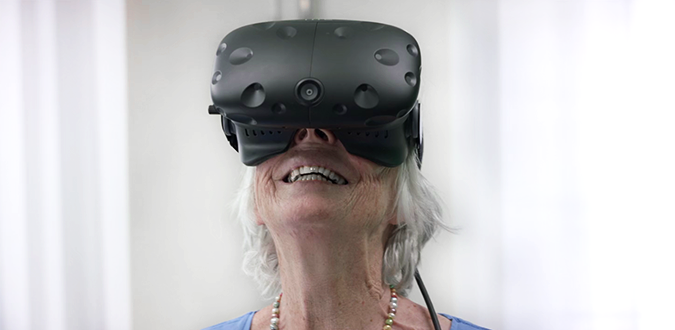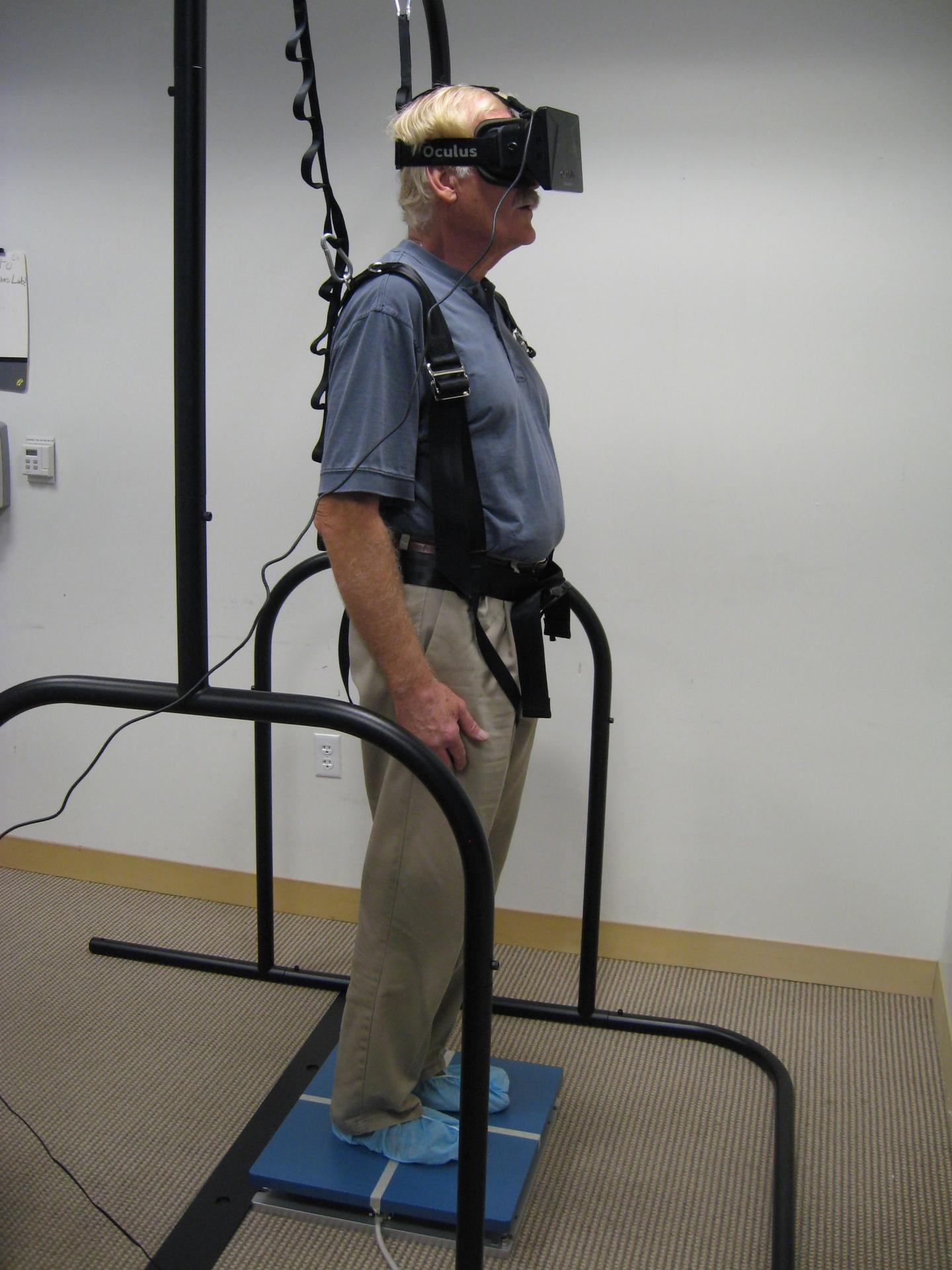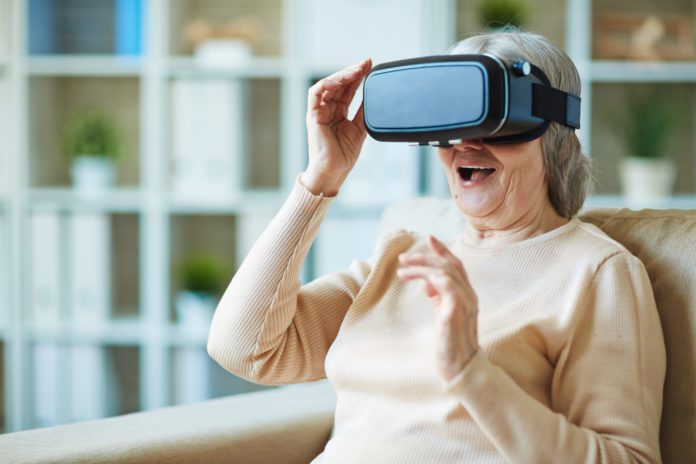Many medical professionals would attest that exercise is one of the best medicines for those with chronic illnesses and that it should be a high priority for their patients. On the flip side, people suffering from painful diseases that affect muscles, such as fibromyalgia, might find it the least appealing form of medication. However, there is a promising new study for a therapy that combines virtual reality and exercise that may prove to be a literal “game changer” for those living with fibromyalgia.
Virtual Reality Exergames Study
The study, “Exergames for women with fibromyalgia: a randomized controlled trial to evaluate the effects on mobility skills, balance, and fear of falling,” set out to analyze the effects of exergames, a virtual reality-based exercise program, on the mobility, balance, and fear of falling on 83 women who were clinically diagnosed with fibromyalgia.
This study lasted eight weeks. The participants in the control group used exergames twice per week for one hour each session. The women in the control group showed marked improvement in all areas in the small amount of time that the study was conducted. Exergames proved to be a success.
Researchers stated, “These results, along with high adherence, indicate that exergames may be a feasible alternative form of rehabilitation therapy for improving balance and mobility problems in this population.”

Fibromyalgia Sufferers Require Physical Exercise
Fibromyalgia, or FM, is a chronic disorder that causes musculoskeletal pain, fatigue, and issues with sleep, mood, and memory. Years of research have shown that exercise is highly effective for fibromyalgia management. This includes regular physical exercise and other forms of manipulating one’s musculature system such as massage, hydrotherapy, acupuncture, and stretching. Now cutting-edge exergames are proving to be an effective treatment as well.

Why Are Virtual Exergames So Effective?
Virtual exercise therapy provides an overall better quality of life for users by aiding in the restoration of their physical functioning. VirtualEx-FM, the exergames system used in the study, uses specific games to improve balance and mobility and decrease fear of falling.
Another incredible component of this exergame system, according to the researchers, is that it has built in software to track the movements of the participants, and it provides real-time feedback about their movement patterns.
This allows the technician, who is controlling the program while the participants are using it, to adjust the level of difficulty for each individual user. No other form of therapy can precisely tailor treatment for each individual FM patient as precisely and quickly as the VirtualEx-FM system.
Exergames Address Multiple Issues Surrounding Exercise For Those With Fibromyalgia
To address the symptoms of fibromyalgia and restore physical function to FM participants, VirtualEx-FM uses three distinct virtual environments.
- Aerobic
Prior research has shown that light to moderate aerobic exercise helps decrease pain, fatigue, and depression in FM patients. The aerobic component of VirtualEx-FM incorporates full-body movements performed by a professional kinesiologist and dance instructor. The user completes a warm up followed by either a full-body joint movement workout or a dance video similar to Zumba, a popular form of group exercise.
- Coordination & Posture
FM patients often have poor coordination and posture because FM affects their body’s connective tissues including muscles, ligaments and tendons. Strengthening the foundation of the body, the core, is one of the best ways to build muscle and reestablish coordination and posture.
The second component of VirtualEx-FM focuses on improving coordination and controlling posture. In this virtual game, the user interacts with an apple that appears in different locations. The low-impact movements are based on core strengthening exercises. The level difficulty is controlled by a technician which allows the user to continually improve because the difficulty of the program can be increased as the user progresses in strength.
- Mobility, Balance, & Coordination
FM is often associated with poor balance caused by pain in the body’s connective tissues and severe headaches or dizziness which leads to the fear of falling. Mobility, balance, and coordination are all vital to conducting normal daily life activities.
The third component of VirtualEx-FM helps improve mobility, balance, and coordination via a game where the user steps on “virtual footprints.” The study states that the steps range from taking normal steps to tiptoeing to heel-walking, or raising their knees or heels while taking steps.
This component is also controlled by a technician who can manipulate the difficulty of the game thus making it more or less challenging according to the user’s mobility, balance, and coordination level.
Can Exergames Increase Exercise Motivation?
Motivation and low adherence to exercise programs is a common problem with FM sufferers. Muscular pain could be the main deterrent when it comes to motivation to exercise. The VirtualEx-FM system combines virtual reality and exercise to effectively distract patients from pain that they incur which could make exergames a more attractive alternative to fibromyalgia patients.

This study did not examine motivation of the participants. It did deliver a social setting since participants used the exergames in groups of three, and research has shown that social networks are a highly effective method of motivating people to exercise. However, more research needs to be conducted to assess participant motivation.
This study is merely the first analysis of using an innovative virtual reality based exercise to improve the overall quality of life for those living with fibromyalgia. By addressing their specific exercise needs and providing an innovative new way to improve strength, balance, mobility, and reduce fear of falling, this could be the wave of the future as far as FM therapy is concerned.





